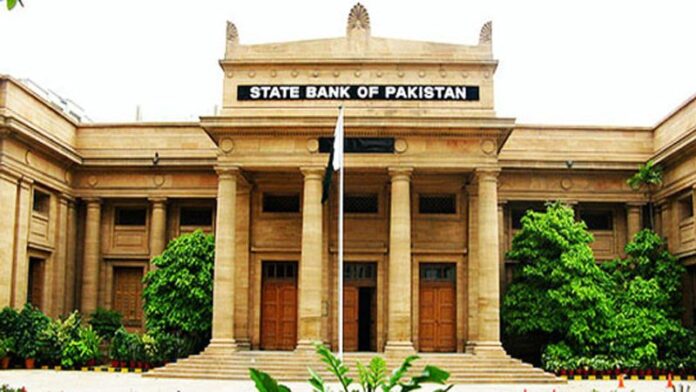KARACHI: The State Bank Of Pakistan (SBP) is conducting a Reverse Repo Purchase injection of the usual 7 day tenor and the 63 day tenor, for the second time with a maturity date of February 25, 2022.
“SBP has done another OMO to manage liquidity of the market. The longer tenor is expected to give confidence to the market,” says Samiullah Tariq, Head of Research at Pak Kuwait Investment Company.
“The continuation of the 63 day OMO further strengthens SBP’s stance on stable policy rate in January 2022 policy,” says Fahad Rauf, Head of Research at Ismail Iqbal Securities.
“Forward guidance is just guidance, and this (OMO injection), on the other hand, is a concrete step,” says Rauf.
OMO Result
For the 7 day injection, 24 quotes were offered between 9.99-9.82%. As for the 63 day injection, 19 quotes were offered between 10 – 9.5%.
Rs701,000 million was offered through the 7 day injection. All 24 quotes were accepted at a 9.82% rate. On the other hand, Rs456,750 million was offered through the 63 day injection. 16 quotes were accepted through which Rs381,750 million was accepted at 9.85%. There is no change in the rate accepted for the 7 month tenor compared to the last injection, whereas, the rate accepted for the 63 day tenor is down by 5 bps.
Cumulatively, the SBP offered Rs1,157,750 million and accepted quotes for Rs1,082,750 million.
Market Analysis of injections
The market is seeing this in different ways. “This would signal to the market that SBP is willing to accept a fixed return for 2 months, which means policy rates would remain unchanged in the near term,” says Rauf. Essentially, this move just cements the markets belief that the January MPC decision will be status quo to stabilize the market. The question remains, what happens afterward.
Another way to look at this is to see this as a liquidity injection to banks so that they can lend it back to the government later while also bringing down yields. This draws semblance to the SBP buying bonds in the secondary market to bring down cost of funds for the Government and limiting banks to charge abnormal spreads.
You could also say this isn’t really the SBP striking back, instead it’s the SBP falling to the whims of the market. Essentially the equivalent of saying “please take our money and lend it back to us, but hey, hold back on the yields, will you?”
However, with secondary yields coming down following the OMO, one could say the SBPs move did work. Despite that, one can’t really ignore the fact that the market didn’t really believe the SBP until the SBP actually put their money where their mouth is.
Relatively Young Historical context
As per data available from 2008, this is the largest maturity cycle for an OMO. The previous high was 17 days in August 2011. This is relatively a fraction of 63 days which was injected on 17 December 2021, and again today, 24 December 2021.
On December 17, the SBP introduced a 63 day OMO injection in addition to the usual 7 day injection. The amount offered was Rs1,086 billion in 7-days and Rs735 billion in 63 days. Through this injection, the SBP accepted quotes Rs1,086 billion at 9.82% in 7 days tenor, and Rs689 billion at 9.9% in 63 days.
All of the 7 day target was met but not entirely for 63 day tenor because the rate that was bid on was lower than what the SBP may have wanted to inject liquidity. The cut off was 9.9%. This means they left out bids that were lower. Based on the data, the highest rate at which bids were received was 10.36%, the lowest bid was 9.5% which is 25 bps lower than the policy rate. This means the SBP did not get too desperate with the OMOs. Following the injection, the yields for 3 month T-Bills dropped 41 bps day on day, and 34 bps day on day for the 6 month T-Bills.
“Since the last monetary policy announcement tagged with forward guidance by the SBP, followed by a 63 day OMO injection, it is clear that interest rates are expected to remain unchanged in the near term,” Arif Habib Limited Head of Research Tahir Abbas said based on Wednesday’s PIB auction.
How does all this work?
An OMO is an activity by the central bank to give or take liquidity in its currency to or from a bank or a group of banks. When conducting OMOs the central bank can either buy or sell government bonds or other financial assets in the open market, enter into a repo or secured lending transactions with a commercial bank.
The central bank gives money to the market as a deposit for a defined period and takes an eligible asset as collateral. A reverse repo is a short-term agreement to purchase securities in order to sell them back at a slightly higher price. Central banks use reverse repos to add money to the money supply via open market operations.
























